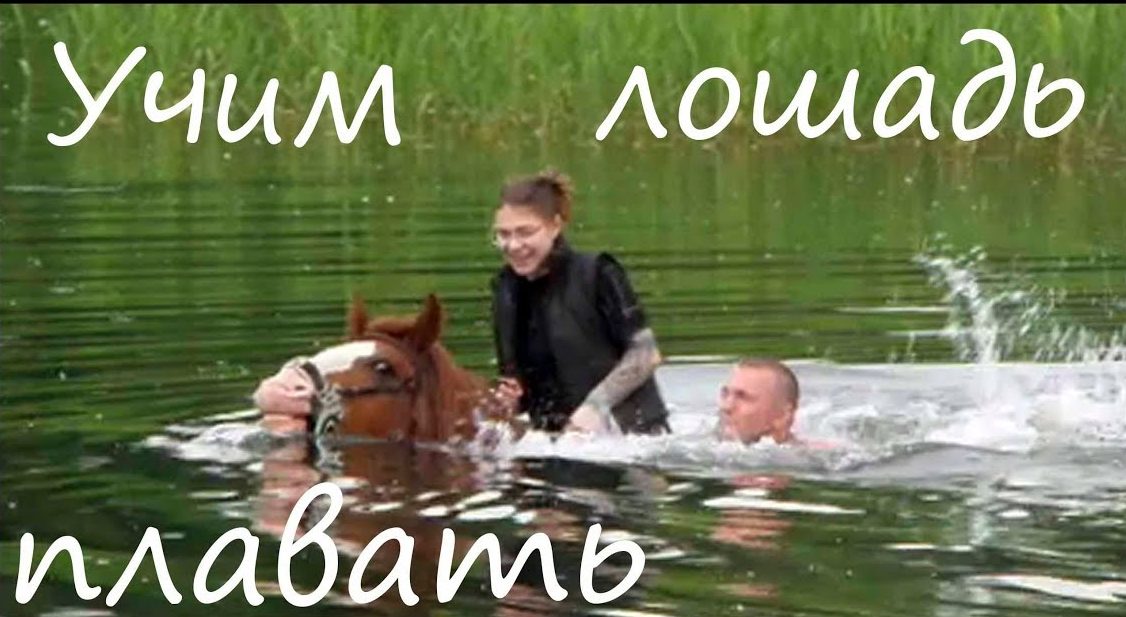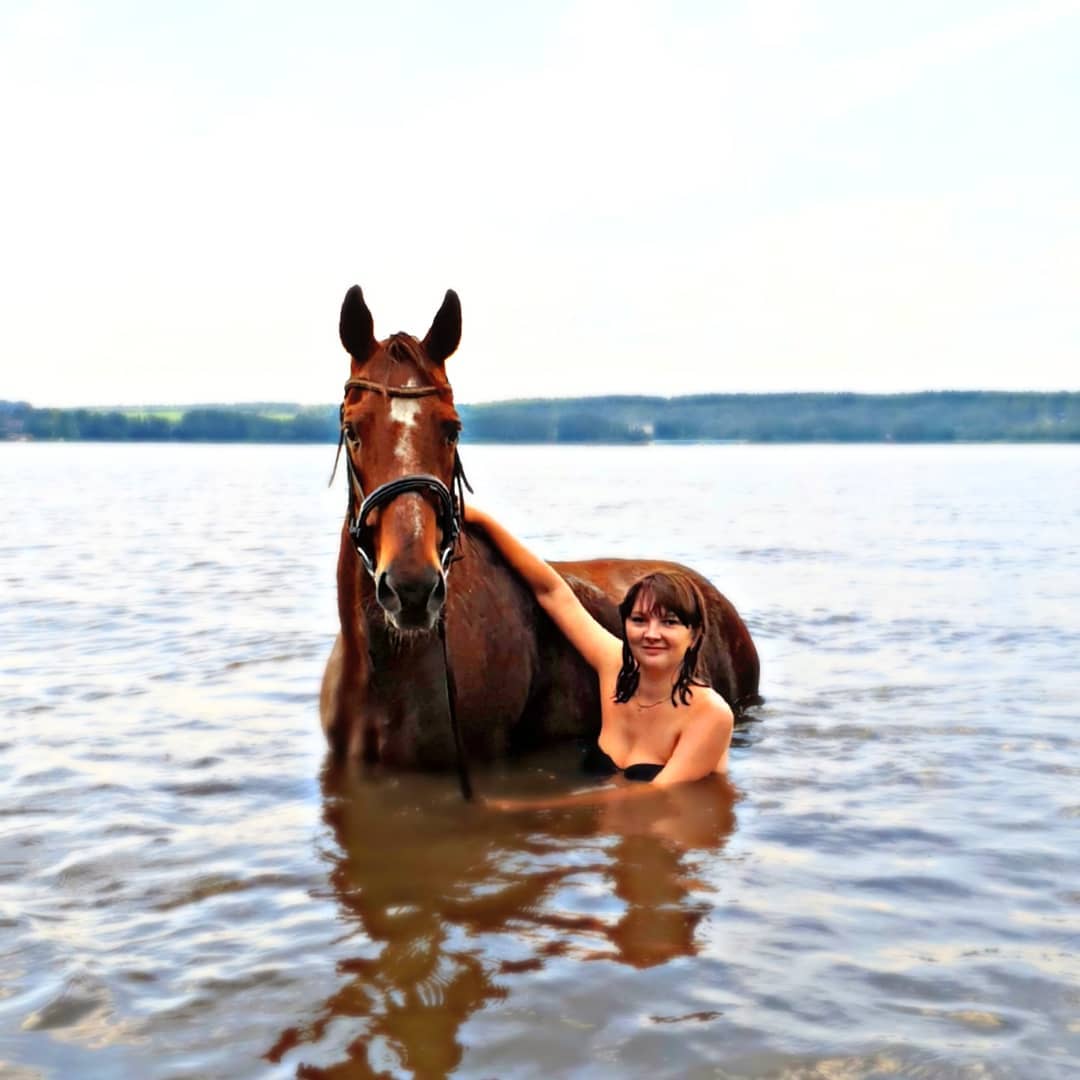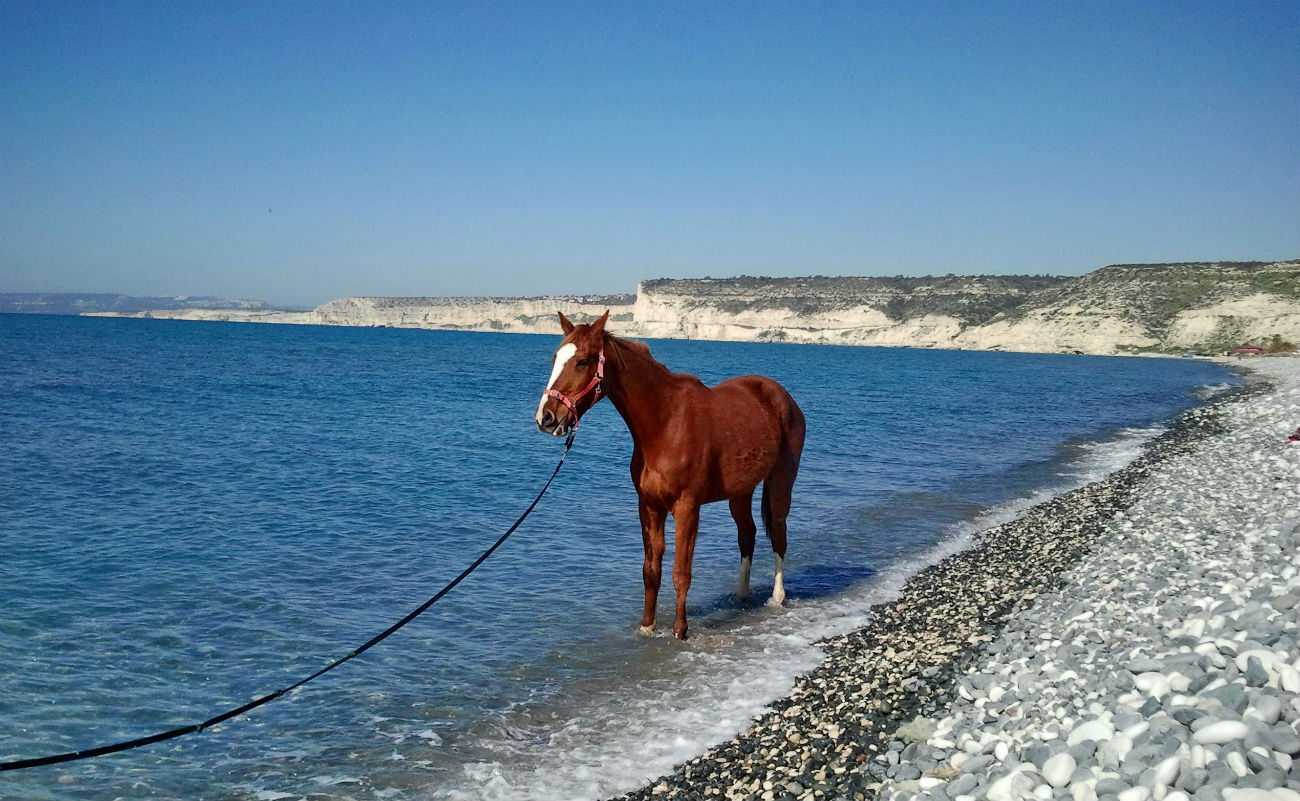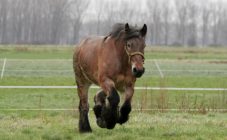Content:
The horse was domesticated several thousand years ago. Due to its high endurance and speed of movement, this animal is still in great sympathy and demand among people to this day, even though mechanization replaced them in many works. Horses are now mainly used in hippotherapy, which helps with many human ailments. This is an intelligent animal, good-natured to people, well trained and amenable to training. Communication with them has a very beneficial effect on children who attend the horse club. Leisurely horseback riding helps to recover from injury. It develops balance, helps to overcome fear, has a beneficial effect on the child's psyche.
Do I need to teach horses to swim
Whether horses swim in bodies of water can be seen when a herd of horses swims across the river and can easily swim across it. They belong to herd animals, and if the horse sees how relatives are melted by swimming from one bank to another, he will follow them. Even small foals are not afraid to swim on a par with adults.
When the pet trusts the owner, and the breeder will use this trust for his health, well-being and convenience, the pet will happily follow him and carry out all his commands.
Many horses can swim. They can swim across a shallow body of water. There is no need to specially teach these animals to swim, this is one of the instincts inherent in nature. However, they should not be forced to bathe, as horses may feel fear if this is the first time. In the future, they may dislike water. Some individuals accept this procedure without enthusiasm. But mostly many animals like to swim. They can swim even long distances, but since water is not their native element, it is not worth overloading them with bathing.
How to swim with a horse
Love for horses can motivate a person to bathe with them. You have to be especially careful here. First you need to explore the bathing site. It should not be far (from the place where animals are kept) and deep body of water. The place for swimming should have a gentle bank, sandy, flat bottom, not a strong current of water. It is necessary to make sure that the pet is not afraid of water, and unforeseen situations are not expected that can even lead to injury to the rider. Only a calm, caring attitude towards the animal will create a favorable atmosphere for joint bathing. The first time you need to take all the precautions. It will not be superfluous to put on strong gloves and do not forget the cord (this is a strong seven-meter cord, an auxiliary device for controlling the horse) if the horse suddenly starts to rears up (a candle).
When he is worried about entering the depth, he, not wanting to go forward, can express stubbornness. Experienced breeders use signals to determine the mood of the animal. They know how to predict the actions of the pet. Stopping the horse, lifting the head are the precursors to stand in a candle or the intention to turn back. Then attempts to conduct a joint voyage should be stopped.
If you go into the water with a horse, sitting in the saddle, then you must not forget that, having lost support under your feet, it will be difficult for him to swim with a load, therefore, it is necessary to slip out of the saddle. This will prevent unnecessary overload and anxiety in the animal. You can swim alongside, holding on to the mane, neck or bit.The breeder should monitor his movements in the water, because the horse does not feel well in an unfamiliar environment and can accidentally hit and injure.
If the horse is afraid of water and bathing
To wash off dust and remove dirt, especially in summer, it is advisable not to be limited to rinsing from a hose, but to bathe in a pond. This helps to harden and improve the well-being of the horse. Protect her from colds.
Cool water causes deep and rapid breathing, increased tone, which helps to increase metabolism.
Hygiene and bathing conditions must be observed:
- you can not bathe immediately after feeding;
- at water temperatures below +18 degrees;
- the horse's body must be wiped off after the procedure;
- swim for no longer than 20 minutes;
- slowly accompany the horse to and from the bath;
- before swimming, it will be correct to have a watering hole, only then swimming.
It is advisable to go with a horse to the other side, if it is a shallow river and return back.
This will help the animal move straight and not try to turn back. For the same reason, horses should not be allowed to swim and bathe along the shore.
Having taught a horse to swim during the day, you need to move on to teaching it to swim at night.
Often, after the day's work, weary animals were released to the "moon pasture" or otherwise at night so that they would not languish in the stables.
The main thing is not to force the horses to enter the water.
If the breeder and the animal have established a relationship of trust, then there should be no problems with bathing.
Fear of this procedure can occur if the horse sees water or large quantities of it for the first time, for example, the sea.
It is advisable to lead her through the shallow water by the bridle to get used to it. You can encourage with a delicacy when it goes deeper, encouraging with kind words, stroking.
If the horse is still afraid, you must immediately get out of the water. You cannot shout and whip a horse. It is important to patiently train your friend for the wonderful activity of bathing, and he will learn to enjoy this procedure.
The obedience of an animal depends on establishing good contact with it. This is expressed in the understanding of voice commands, specific signals or personal example.
When entering a depth, support under the feet is lost, which causes excitement in the horse.
In order not to discourage a horse from swimming the first time, you need to act prudently and carefully. The nobility and charm of these animals delight and inspire to kindness, to good selfless deeds. Their beauty and grace are combined with strength and devotion.
Even a short communication with these animals will bring positive and wonderful mood, a horse ride will charge you with cheerfulness and positive energy. Adults understand with their minds and feel with their hearts this, children understand what kind of miracle it is, intuitively and are drawn to horses.















